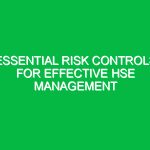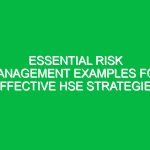Welcome to Today’s Toolbox Talk
Hello team! Thank you for gathering here today. We’re going to discuss an important topic that affects not only our Safety on the road but also the well-being of everyone we share the road with. Today’s Toolbox Talk focuses on Road Rage (Motor Vehicle Safety). Understanding and managing road rage is crucial for preventing accidents and ensuring a safe working Environment.
What is Road Rage?
Road rage refers to aggressive or angry behavior exhibited by drivers in response to perceived provocations on the road. This can range from yelling and honking to dangerous driving maneuvers. It’s crucial to recognize that road rage can escalate quickly, leading to serious accidents and injuries.
Importance of Addressing Road Rage
As employees who are often on the road, it is essential to understand the implications of road rage not only for our safety but also for the safety of our coworkers and the general public. According to the National Highway Traffic Safety Administration (NHTSA), aggressive driving contributes to a significant percentage of accidents. By addressing road rage, we can take proactive steps to minimize risks associated with motor vehicle safety.
Recognizing the Signs of Road Rage
Identifying road rage in ourselves or others can be the first step in preventing dangerous situations. Some common signs include:
- Tailgating: Following another vehicle too closely.
- Frequent lane changing: Zigzagging between lanes without signaling.
- Yelling or gesturing: Expressing frustration vocally or through hand signals.
- Blocking other drivers: Preventing other vehicles from passing.
By being aware of these behaviors, we can take steps to mitigate our reactions and maintain a calm demeanor while driving.
Key Factors Contributing to Road Rage
Understanding what triggers road rage is vital for Prevention. Some common factors include:
- Stress and pressure: Daily life stresses, such as work demands or personal issues, can spill over into our driving.
- Traffic congestion: Being stuck in traffic can lead to frustration and impatience.
- Disrespectful driving: Encountering aggressive drivers can provoke a negative reaction.
Recognizing these triggers can help us prepare mentally and emotionally for our drives, allowing us to stay calm and focused.
Real-Life Scenario
Imagine you’re driving to a job site, and suddenly, another driver cuts you off. Your initial reaction might be to honk or yell. However, consider the potential consequences: escalating the situation could lead to a dangerous confrontation or an accident. Instead, take a deep breath and let it go. Remember, your safety is more important than being right.
Practical Tips for Combatting Road Rage
Now that we understand road rage, let’s discuss how we can combat it effectively:
- Stay Calm: Practice deep breathing or listen to calming music while driving.
- Plan Ahead: Allow extra time for your journey to reduce stress caused by running late.
- Avoid Aggressive Drivers: If someone is driving aggressively around you, maintain a safe distance and avoid engaging.
- Practice Defensive Driving: Stay aware of your surroundings and anticipate the actions of other drivers.
- Know When to Walk Away: If someone confronts you, it’s best to disengage rather than escalate the situation.
Best Practices for a Safe Driving Environment
Apart from managing our emotions, there are several Best Practices to follow to ensure a safe driving environment:
- Follow Traffic Laws: Adhere to speed limits and road signs.
- Use Turn Signals: Always signal your intentions to other drivers.
- Keep a Safe Following Distance: Maintain enough space between you and the vehicle ahead to react to sudden stops.
- Stay Off Your Phone: Avoid distractions by keeping your phone out of reach while driving.
The Role of Employers in Road Rage Prevention
As employees, it’s important to recognize that our employers also play a significant role in promoting Road Rage (Motor Vehicle Safety). Companies can implement safety Training programs that focus on defensive driving and stress management. Furthermore, providing employees with the necessary tools and resources to manage their time effectively can help alleviate stress related to traffic and deadlines.
Company Policies and Compliance
It’s also important to familiarize ourselves with our company’s policies regarding safe driving and road rage. Many organizations have specific Regulations that align with local traffic laws and safety Standards. Compliance with these guidelines not only protects us legally but also ensures a culture of safety within the workplace.
Open Discussion: Sharing Experiences
Let’s take a moment to reflect on our personal experiences with road rage. Have any of you encountered aggressive drivers? How did you handle the situation? Sharing our experiences can help us learn from one another and develop better coping strategies.
Conclusion: Making Road Safety a Priority
In closing, I want to emphasize the importance of applying the practices we discussed today regarding Road Rage (Motor Vehicle Safety). By staying calm, planning ahead, and following Safe Driving Practices, we can significantly reduce the risks associated with road rage. Thank you all for your attention and commitment to safety. Remember, our goal is to ensure a safe working environment for everyone.


